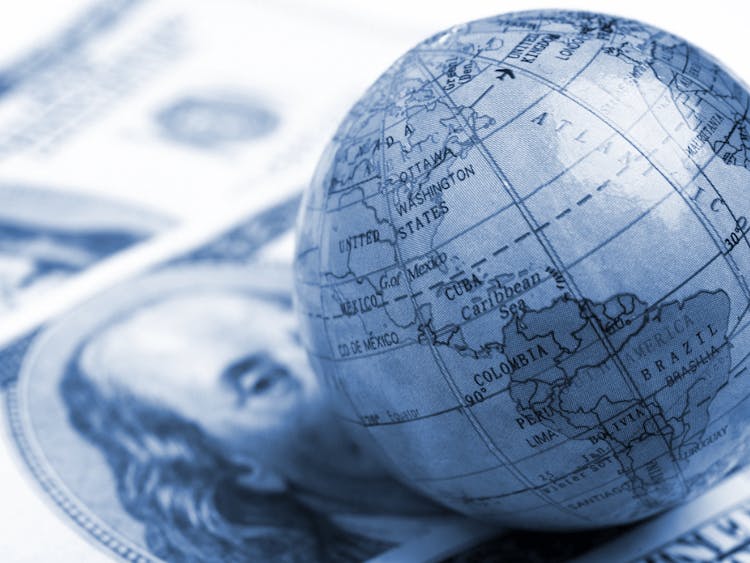Why is globalization important for translation?

As a multinational business, you are part of a vast global network of suppliers and consumers. This means that you are directly impacted by the phenomenon of globalization, which has transformed the world into an interconnected and interdependent marketplace.
Take a moment to consider the everyday items you use, such as your computer, car, or clothing. Even if you make your own clothes, the fabric you purchase is likely manufactured in one country and packaged in another. Your computer or mobile device may contain over 12 different parts, each sourced from a different factory in another country and assembled somewhere else before arriving at your local store.
For instance, Apple, one of the world's largest technology companies, sources components from over 30 countries, including China, the Philippines, Germany, and Brazil.
This is the reality of globalization in action.
Whether you choose to expand your operations to other countries or remain local, you are part of a global supply chain. To develop a successful global strategy, it is crucial to understand the macroeconomic forces that drive globalization and how they impact businesses on a practical level. This means keeping abreast of the latest trends, changes, and challenges that globalization presents.
What is Globalization?
Globalization is a term that is often used in political, social, and economic contexts and is managed through international organizations such as the World Trade Organization (WTO), the World Bank, the International Monetary Fund, and the United Nations. However, the impact of globalization is felt by all of us, not just by those in positions of power who are debating fiscal policies or free trade agreements.
At its core, globalization refers to the increased interdependence of people and goods in today's world. It is the big picture that surrounds your business strategy, encompassing every aspect of your global operations, from scaling your manufacturing processes to establishing office locations and even your localization and translation efforts.
Although the term "globalization" only came into existence after the rise of industrial capitalism post-World War II, the history of globalization goes back to ancient international trading networks, such as those along the Silk Road. Spices, silks, lumber, and gold all made their way around the world, and with them came new languages, philosophies, and cuisines.
From a microeconomic perspective, globalization refers to the framework that businesses use to transition from a single-country product or service to a multinational one. As a business owner, it is important to understand the concept of globalization and how it impacts your business, especially in terms of translation and localization efforts that can help you reach a global audience effectively.
How Does Globalization Work?
As a multinational corporation, globalization requires careful consideration of various factors, including:
Market entry strategy: There are several ways to enter a foreign market, such as exporting, licensing, franchising, partnering, mergers and acquisitions, greenfield investments, and more. It is crucial to identify the best approach based on your business goals and the local market conditions.
Global branding and localization: To effectively market your brand and products in different markets, you need to determine how (if at all) you want to modify your brand and products. This includes developing a global market value proposition and balancing local responsiveness with global integration.
Supply chains: Expanding to multiple markets requires ensuring that you can provide the same level of service. This involves determining what shipping models to use and understanding how global trade regulations, labor markets, tariffs and trade barriers, and other international factors may impact your supply chain.
Regulations: Entering new markets means navigating a new set of legal frameworks and trade policies. This includes complying with local regulations and trade policies that govern your hiring process, benefits, data privacy, and more.
Translation: To effectively reach your target markets, you need to understand the languages spoken and the nuances of the local cultures. This requires a comprehensive translation strategy that addresses language and cultural differences and helps you effectively communicate with your customers.
What are the benefits of globalization for businesses?
Globalization brings people and goods closer together, making it easier to move products and people from one place to another. Proponents of globalization argue that it can lead to higher living standards for developing countries, stronger GDP, and deeper global ties through international trade.
From a business perspective, globalization offers significant benefits, including the ability to engage with customers and users across the world, expanding your market footprint and revenue. Localization, which is a subset of globalization, involves adapting your product offerings and experiences to resonate with a local audience, an essential part of international expansion.
Consider the example of Amazon, one of the most successful global companies in the world. Amazon operates in 58 countries and reaches more than a billion people online every day, making it the leading e-commerce company in every country except China. Amazon's personalized homepage is an excellent example of how a company can localize its offerings to resonate with a global audience.
The benefits of applying globalization to your business include:
- The potential for additional sources of revenue
- Access to different economic systems and ways of doing business
- The ability to reach a foreign culture in a meaningful way
- Building trust between the company and customers/clients across national borders
- Accelerating creativity and innovation
- The opportunity to lead within the industry.
By embracing globalization and localization, businesses can expand their reach and establish a global presence, providing them with a competitive edge in the marketplace.
What are the challenges of globalization?
While globalization offers many benefits, it also presents several challenges. Technological advances have accelerated globalization, leading to negative effects such as volatile financial markets, climate change, and income inequality. Rising protectionism and populist ideology have also led to ripple effects like Brexit, the 2008 financial crisis, and managing the pandemic, affecting everyone, not just individual citizens.
On a business level, managing a global operation is more challenging than running a small local business. As the number of moving pieces, trade routes, staff, offices, and policies increases, the likelihood of running into trouble also increases.
Some common challenges of globalization for businesses include:
- Building enough global brand recognition and awareness
- Managing changing regulations and rules for different countries
- Navigating supply chain logistics and customer service across countries and time zones
- Competing against local brands with established market share
- Understanding customer preferences in foreign markets
- Localization and translation, which requires addressing language and cultural differences.
Addressing these challenges requires a comprehensive strategy that considers the unique needs of each market and leverages the latest technology and best practices in globalization and localization. By doing so, businesses can successfully navigate the challenges of globalization and establish a strong global presence.
What are some best practices for globalization?
Brands can incorporate globalization into their product strategy by adopting best practices such as:
- Creating content with evergreen messaging: Brands should incorporate universal messaging that resonates with customers across the world while taking a localized approach that accounts for cultural and language differences. For instance, Coca-Cola has achieved success by standardizing its messaging around happiness, enjoyment, and sharing while offering variations in local flavors and packaging.
- Managing the company value chain: Brands should ensure that their company values align with their top goals and protect their competitive advantage. Unilever, for example, employs a transnational strategy, hiring local managers to run their in-country operations and manufacturing facilities while dividing the company based on product offerings.
- Creating a globally recognizable brand that defines its own concepts: Brands should develop a strong global brand that can adapt to local preferences. Starbucks has achieved success by partnering with local coffee companies and offering unique blends that match local taste preferences while employing traditional craftsmanship to build stores that fit local cultures.
- Conducting thorough market research: Brands should conduct extensive market research to understand cultural and linguistic nuances and tailor their product offerings accordingly. This includes understanding local laws, regulations, and customs, as well as identifying target audiences and their preferences.
- Investing in localization and translation: Brands should invest in localization and translation services to ensure their messaging and product offerings are culturally and linguistically appropriate for their target markets. This includes translating websites, marketing materials, and product descriptions, as well as adapting products to meet local preferences and regulations.
- Leveraging technology: Brands can leverage technology to facilitate global communication, collaboration, and supply chain management. For example, cloud-based software can enable real-time collaboration among teams in different countries, while e-commerce platforms can facilitate cross-border sales and logistics.
- Developing a strong international team: Brands should invest in building a diverse and culturally sensitive team that can navigate the complexities of global markets. This includes hiring local talent with language and cultural expertise, as well as providing cross-cultural training and support to team members.
- Partnering with local organizations: Brands can establish partnerships with local organizations to gain insights into local markets and build credibility with local audiences. This includes partnering with local NGOs, trade associations, and community groups to support local initiatives and build relationships with local stakeholders.
By following these best practices, brands can navigate the challenges of globalization and unlock new opportunities for growth and expansion. Whether entering new markets or expanding existing ones, a well-executed globalization strategy can help brands build a strong global presence and succeed in an increasingly interconnected world.
Unlock global success with Hareword's online translation solutions
In today's interconnected world, expanding your business globally is essential for growth. However, navigating the complexities of international markets can be daunting, especially when it comes to language and cultural differences. That's where Hareword, a leading online translation company, can help you achieve global success and build a strong global brand.
By partnering with Hareword, you can streamline your globalization efforts and avoid costly mistakes. Our powerful online translation solutions are designed to help you connect with customers across the globe, no matter what language they speak. Whether you're entering new markets or expanding your existing ones, Hareword can provide you with the expertise and technology you need to succeed.
To learn more about our online translation solutions and how we can help you achieve global success, contact us today!
Related Contents
Weekly Newsletter
Get Guidance on Localization, Drive Top-line Revenue





